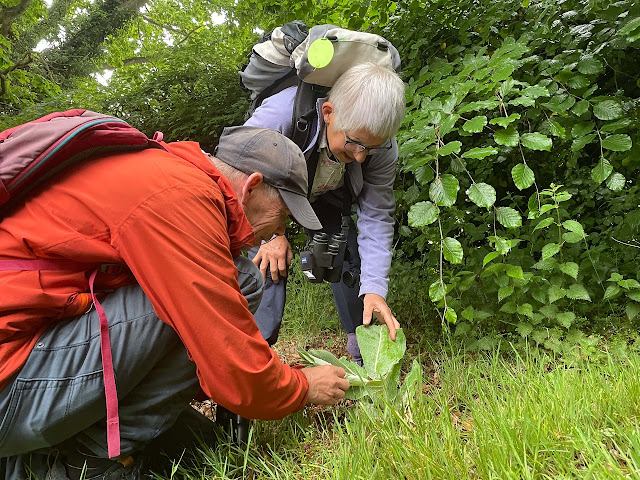Eaton Park Nature Ramble - Monday 23 May 2022 6-8pm
Guest blog by Sarah Scott, Friends of Eaton Park
Thank you to
Chris for leading another enjoyable walk in Eaton Park. We very nearly cancelled ... it was raining
heavily at 4pm but, after detailed scrutiny of every possible weather app and
rain radar option, we decided to go ahead.
It was the right decision (phew!) and we ended up with a dry and
pleasant evening.
 |
| By the lily pond, looking for a damselflies: without sunshine, they were sitting tight. |
A dozen of us met in the rose garden and took a circular route around the park, taking in the lily pond, meadow area and Bluebell Woods. We were listening out for birdsong (a bit of a challenge as there was also a drum group practising in the park!) and we heard (or saw) swifts, woodpigeons, collared dove, blackbirds, dunnocks, goldfinches, greenfinches, blue tits, great tits, coal tit, starlings, wrens, chiffchaffs, robins, herring gulls and lesser black-backed gulls. Some new bird boxes have been added on the south side of the park this year and we were able to watch blue tits whizzing in and out of one of them. By the trees here we saw both greenfinch and goldfinch eating dandelion seeds.
 |
| Chris points out the reflexed (turned back) sepals on a bulbous buttercup. |
The meadow
has yet to come into its full summer flush but there were still plenty of
wildflowers to spot around the park: yellow rattle, rough chervil, cow parsley,
sorrel, greater stitchwort, red campion, mullein, buttercups (three kinds), red
clover, knot grass, pignut, hedge mustard, garlic mustard, mallow and cow-wheat. We identified Yorkshire fog and sweet vernal grass in the meadow. There were also guelder roses and dogwoods in
flower in the hedgerow on the South Park Avenue side of the Pitch and Putt.
 |
| Failing to find any caterpillars on hoary mullein leaves. |
It really is astonishing how much wildlife there is to enjoy in a relatively urbanised public area like Eaton Park and a ramble like this is a great way of learning more about what’s there and becoming better observers. As someone who walks in the park every day, I’m only too aware how easy it is to amble along on auto-pilot and miss treasures right under your nose!

Whose turn is it to try the tearing-a-dogwood-leaf trick?
Sarah Scott,
with photos by Stuart Beard





No comments:
Post a Comment